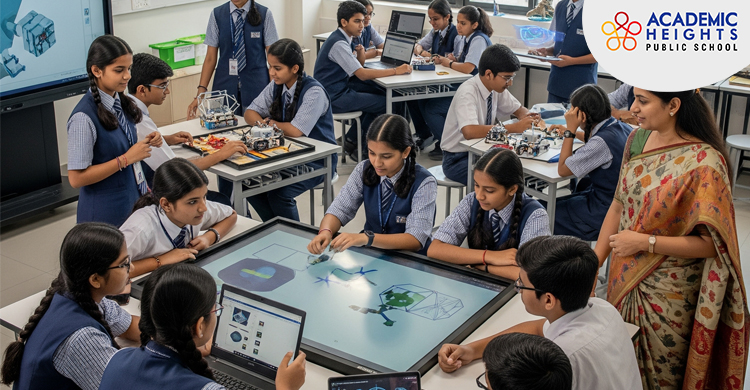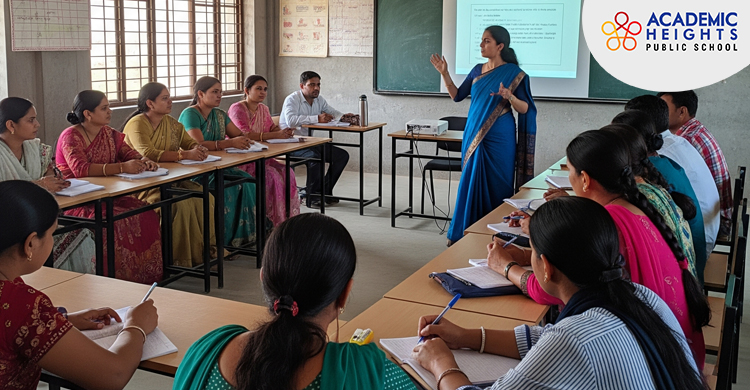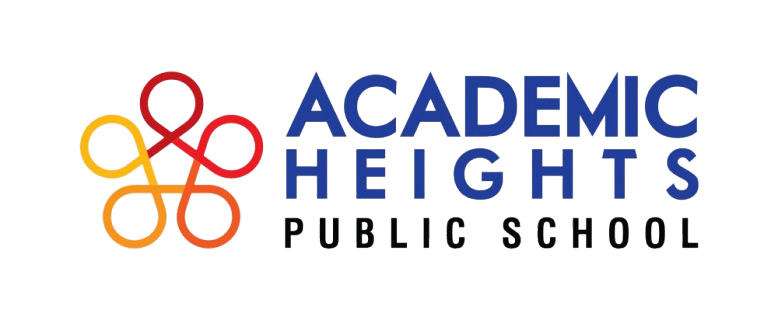Introduced by the Indian Government, the National Education Policy (NEP 2020) for high schools is a major factor in shaping students’ futures as they continue their journey towards college and eventually professional life. By encouraging lifelong learning, diversity, and holistic development, it seeks to revolutionise India’s educational system. In this blog, we will examine NEP 2020 and its potential to transform high school education, along with the challenges it faces in implementation.
Understanding NEP 2020: A Core Highlight

Examining the core highlights of NEP 2020 will help in grasping its concept, and we will be able to understand how this policy can shape future-ready students through innovation and creativity.
- Shift from Rote Learning to Critical Thinking: Gone are the days of rote learning and repeating that information in exams. NEP 2020 for high school has brought a significant shift towards critical thinking. Now, teachers encourage students to challenge assumptions, explore alternatives, and draw their own conclusions.
- Multidisciplinary Curriculum & Flexible Subject Choices: A student-centred educational system and holistic development are now given more attention in NEP 2020. This shows a shift away from a strict educational framework and towards skills and career goals. Previously, schools restricted students to three streams: science, commerce, and the arts. However, they are now encouraged to select courses from various fields.
- Flexible Board Examinations: NEP 2020 for high school introduces flexible board exams that prioritise conceptual understanding over memorisation and allow students to take tests twice a year, thereby reducing the pressure.
- Holistic Development as a Learning Goal: Instead of focusing only on academic achievements, NEP 2020 now also emphasises the physical, emotional, social, and intellectual growth of students. Introducing a multidisciplinary approach, vocational training, and value-based education helps in the overall development of students.
- Digital and Blended Learning Models: The policy emphasises the importance of personalised, interactive, and engaging sessions through the combination of online learning with traditional classroom teaching. It recognises the importance of digital infrastructure and the necessary technology and tools for engaged learning.
- Role of Technology in Classrooms: In order to provide students with a personalised learning experience based on their learning needs and preferences, NEP 2020 for high school places a significant emphasis on technology integration. Initiatives such as DIKSHA and SWAYAM provide high-quality digital content in multiple languages.
- Teacher Training and Curriculum Alignment: The NEP 2020-aligned National Curriculum Framework for Teacher Education (NCFTE) aims to enhance the quality and skills of educators. The framework includes academic strategies for teaching literacy, numeracy, and educational technology, among others. Teachers are provided with ongoing opportunities for professional development through workshops and online modules.
Curriculum Transformation in High School Education

Let’s find out about what curriculum changes in Indian schools have been introduced by NEP 2020.
- New 5+3+3+4 Academic Structure: With the emphasis on Foundational, Preparatory, Middle, and Secondary stages for holistic student development, NEP 2020 replaces the 10+2 structure with a 5+3+3+4 system, replacing the old rigid education structure that only focused on scores and percentages.
- Emphasis on Foundational Stage: NEP 2020 focuses on the importance of the foundational stage (3-8 years) by highlighting this stage as crucial for creating a solid base for future learning and overall development. It involves play-based, activity-based, and interactive learning.
- Choice-Based Subject Selection: Students are no longer confined to choose among the three streams, i.e., science, commerce, and arts. They can select subjects from different streams based on their talent and interests. NEP 2020 for high school encourages this change to promote flexibility and a multidisciplinary approach.
- Reduced Content, Focus on Skills: This is a significant and much-needed shift from rote memorisation to critical thinking skills and core concepts. The policy encourages more experiential learning, hands-on activities, and real-world applications. The focus is more towards skills development, such as problem-solving, digital literacy, and communication.
- Integration of Vocational Education: Vocational education equips students with practical skills and knowledge along with academic learning. It emphasises hands-on experience, internships, and project-based learning to enhance practical skills.
- Technology-Integrated Multidisciplinary Approach: NEP 2020 promotes this approach. By blending different subjects with the use of technology to enhance the learning experience, this approach aims to break down traditional subject barriers and foster critical thinking, and prepare students for a rapidly changing world.
Reforms in Teacher Training and Development

There have been significant reforms in teacher training and development. Let’s see the NEP 2020 changes in schools.
- Continuous Professional Development (CPD): CPD is a continuous learning and development process for educators that aims to improve their practices, knowledge, and abilities in order to improve student outcomes. It involves ongoing activities that support educators in keeping up with emerging trends in education, new technologies, and best practices.
- Pre-Service Teacher Education Models: Pre-service teacher education will undergo a substantial change as outlined in NEP 2020, with an emphasis on integrated programs, multidisciplinary institutions, and hands-on learning. In addition to requiring a 4-year integrated B.Ed. degree as the minimum requirement for teaching by 2030. The policy offers a 2-year and a 1-year B.Ed. programs for individuals with relevant prior credentials.
- Post-B.Ed Certifications and Pedagogy Training: To make sure that teachers remain updated, proficient, and prepared to successfully address a variety of classroom needs, NEP 2020 encourages post-B.Ed. certifications and pedagogy training.
- Subject-Specific Pedagogy and Digital Tools: Subject-specific pedagogy and digital technologies are encouraged by NEP 2020 in order to improve teaching strategies, customise learning, and make education more effective, engaging, and prepared for the future. These advancements highlight NEP 2020’s benefits for students across diverse learning needs and environments.
- National Professional Standards for Teachers (NPST): In order to promote professional development, accountability, and excellence in the teaching profession. The National Professional Standards for Teachers (NPST) seek to establish precise standards for teacher quality.
- Teacher Autonomy and Capacity Building: The goals of teacher autonomy and capacity building are to enable teachers to make sound decisions, be creative in the classroom, and keep improving their abilities for better learning results.
Challenges in Implementation

- Funding and Resource Allocation: Inadequate finance for education and inadequate resource distribution make it difficult to execute reforms. They impact digital access, teacher preparation, and infrastructure, particularly in rural areas, worsening already-existing educational disparities.
- Gaps in Teacher Training and Capacity: NEP 2020 recognises a large discrepancy between the supply and demand for qualified teachers. Many teachers lack the necessary training. The ability to provide teachers with the skills and information. This gap affects the adoption of holistic, multidisciplinary, and experiential learning techniques are frequently lacking. In current pre-service and in-service teacher training programs.
- Infrastructure Limitations in Rural Areas: There are major infrastructure obstacles to the implementation of NEP 2020 in rural areas. These consist of poor physical facilities such as labs and classrooms, restricted availability of online learning materials, inadequate hygienic conditions, and other necessities.
- Ensuring Equity and Inclusion: The National Education Policy (NEP) 2020 seeks to guarantee inclusion and equity in education, but its execution comes with obstacles. These include insufficient infrastructure, particularly in digital and physical resources. The digital divide, particularly in rural areas, and the requirement that teachers receive training to adjust to new pedagogical approaches.
- Variations Across State-Level Boards: Due to variations in state boards’ curricula, evaluation techniques, and resource availability. The policy implementation is difficult. NEP 2020 for high school students aims to bring uniformity, but nationwide disparities in policy adoption and educational outcomes are caused by this variation.
- Reforms in Student Assessment Models: Rigid board exam frameworks, inadequate teacher preparation, and a lack of assessment tools. Also, the challenge of assessing holistic development rather than just academic performance makes it difficult to implement new assessment methods.
- Bridging the Digital Divide: Increasing learning gaps due to unequal access to digital devices, internet connectivity, and digital literacy is a significant problem in implementing NEP 2020, especially in rural and low-income regions.
Conclusion:-
With its emphasis on critical thinking, holistic development, and flexible learning methods over traditional memorisation techniques. NEP 2020 for high school represents a significant shift in India’s educational system. It seeks to equip students for a dynamic future through a reorganised academic framework. This renewed emphasis on basic learning and technological integration. High School Curriculum NEP further supports these aims at the secondary education level. To guarantee inclusive, egalitarian, and high-quality education for everyone. However, its implementation depends on resolving issues including financial shortages, internet access, and infrastructure inequities, particularly in rural areas. Aligned with these reforms, AHPS follows NEP 2020 guidelines to offer future-ready education.
